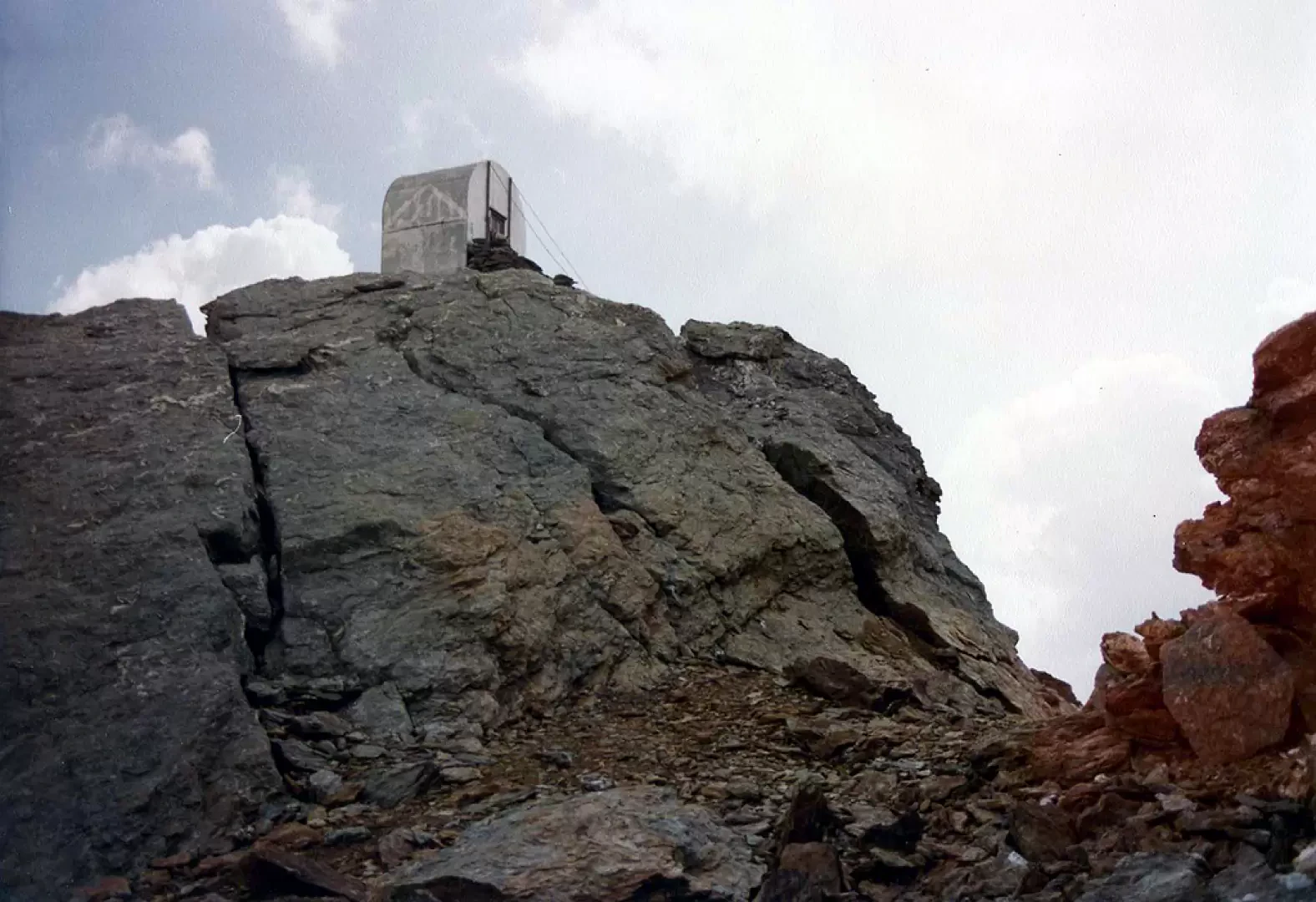Bivouac Agostino Parravicini

Access
To reach the Agostino Parravicini Bivouac, the usual itinerary starts from Campo Moro, where you can park near the dam. From here you reach the Carate Brianza Refuge (2,636 m, about 2 hours' walk), then go over the Bocchetta delle Forbici and arrive at the Marinelli Bombardieri Refuge (2,813 m, about 3 and a quarter hours in total from the start). From the hut, the itinerary continues along a signposted path that crosses stony ground and leads to the Passo Occidentale di Marinelli (3,050 m, estimated time 45 minutes), the access point to the Vedretta dello Scerscen Superiore. The real start of the glacier progression is about half an hour beyond the pass, where it is necessary to follow a long semicircle to the left, keeping a dutiful distance from the walls of the south side of the Bernina, Scerscen and Roseg, until reaching a small rocky window where the bivouac is located (a further 2 hours approx. from the Marinelli hut). The route is signposted, but the glacial environment and the possibility of discharges require particular attention and suitable equipment (rope, crampons, ice axe and clothing suitable for high mountains).
The bivouac can be reached via the following access routes:
- from Campo Moro
Introduction
The Bivacco Agostino Parravicini (Agostino Parravicini Bivouac) is an emergency structure located at an altitude of 3,183 metres in the Bernina Alps, more precisely under the south face of the Piz Roseg, in the Valmalenco, in the municipality of Lanzada (SO). Built in 1936 to commemorate the young Bergamasque mountaineer Agostino Parravicini, who died prematurely on the Cima di Zocca, it represents an essential place of shelter in a severe high mountain context, characterised by the ample presence of glaciers and particularly demanding environmental conditions both from a physical and climatic point of view.
.Description
The location, close to the Vedretta dello Scerscen Superiore (Upper Scerscen glacier) and the normal route to Piz Roseg, offers a privileged vantage point over the most prominent peaks of the Bernina massif, including Pizzo Sella, Piz Roseg and the Bernina peak itself. The building takes the form of a small wooden construction clad in white sheet metal, anchored to the rocky ground by means of metal tie rods. Inside are six folding bunks, a table and some blankets; the water supply requires the melting of the snow present in each season, and a commemorative plaque is affixed to the outside wall. Neither a gas cooker nor electric lighting is available; the structure ranks among the unattended bivouacs and lacks auxiliary services, and is mainly indicated as a makeshift shelter in case of adverse weather conditions, given its limited capacity and the spartan nature of the environment.
The bivouac, due to its location and essential characteristics, is specifically aimed at experienced mountaineers, providing shelter in situations of need rather than as a planned overnight stop. Neither tourist use nor prolonged stops are recommended: the impervious environment and the distance from built-up areas suggest a cautious approach, with adequate evaluation of snow and weather conditions.
Information
Location: Vedretta di Scerscen superiore
Height: 3,183m
Place-beds: 9
Ownership: CAI sezione Valtellinese
Lighting:candle
Gas cooker: not present
Water: fusion
Device charging:not available
Bivouac book:not detected
Itineraries from the bivouac
- Sella Peak
- Roseg Peak